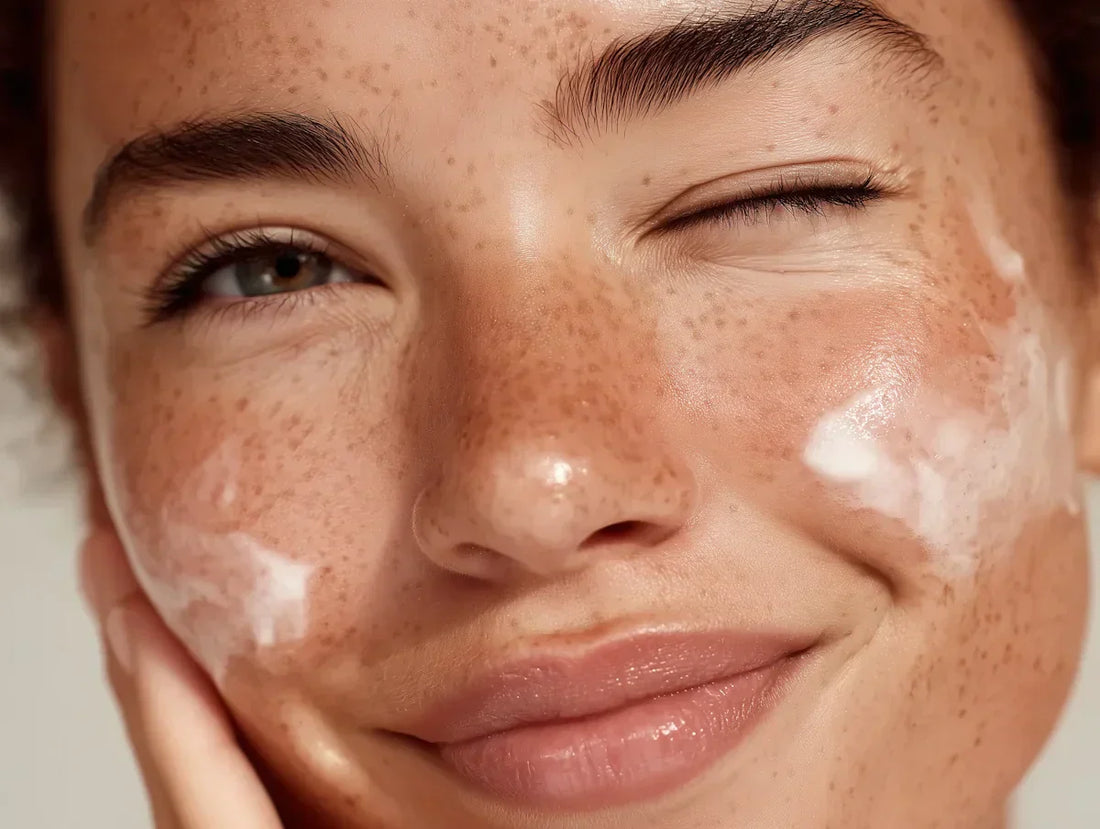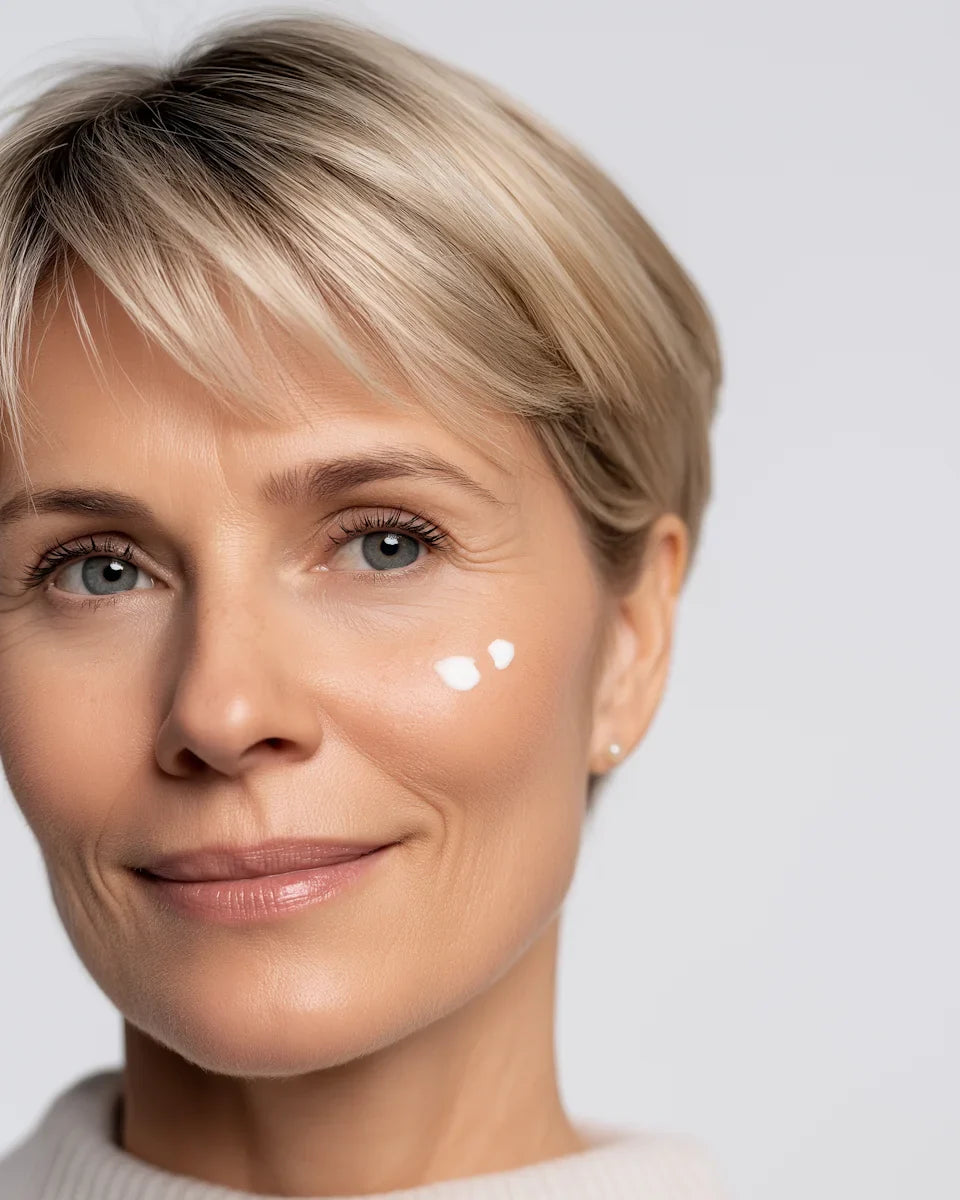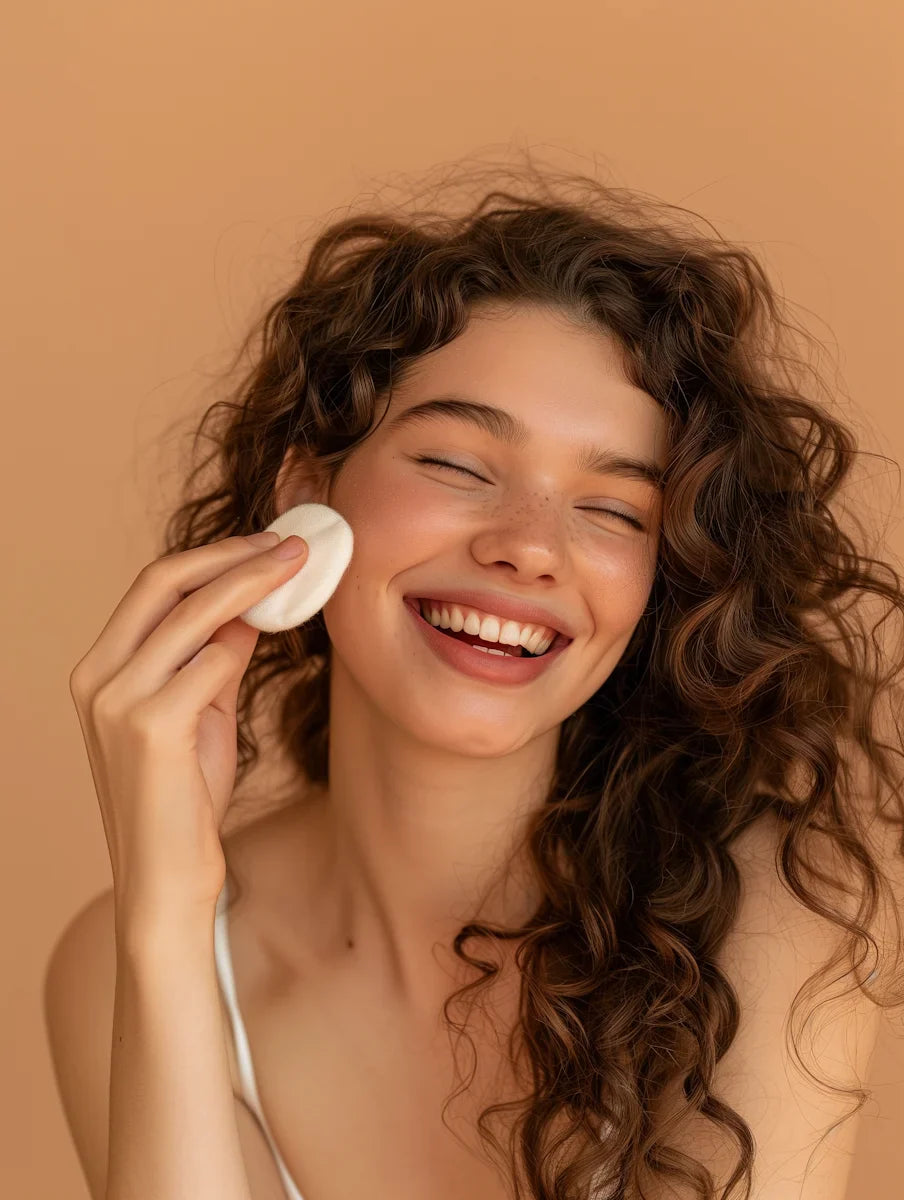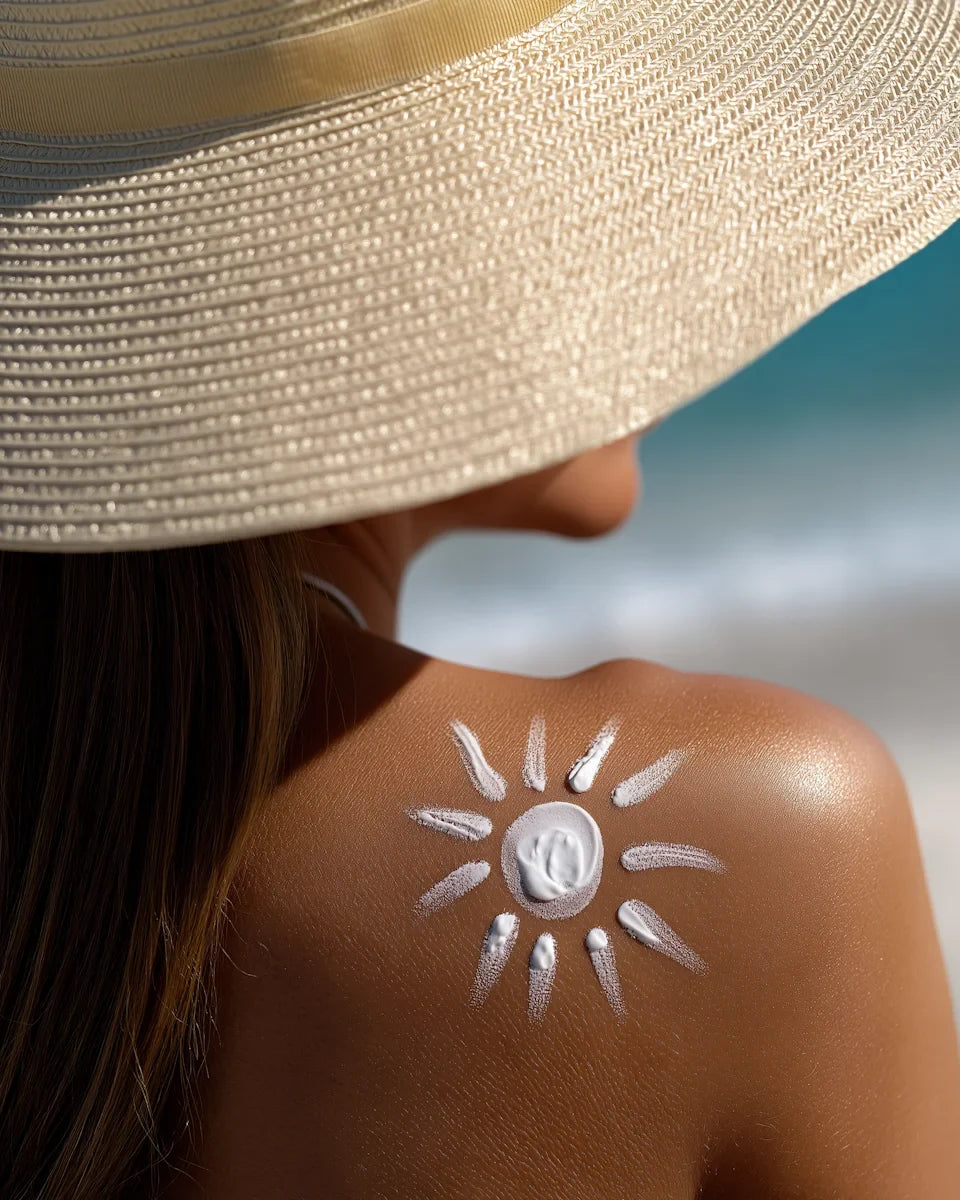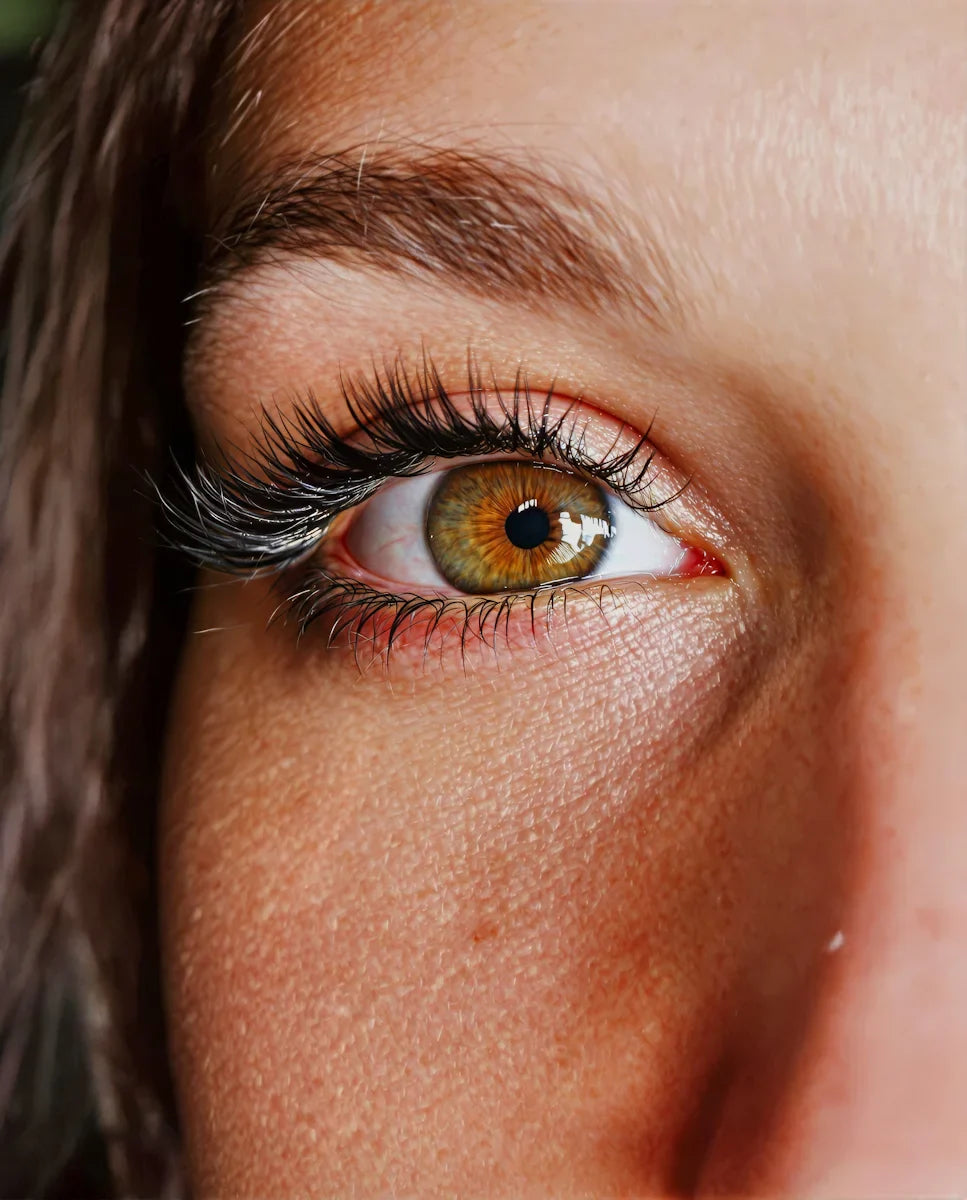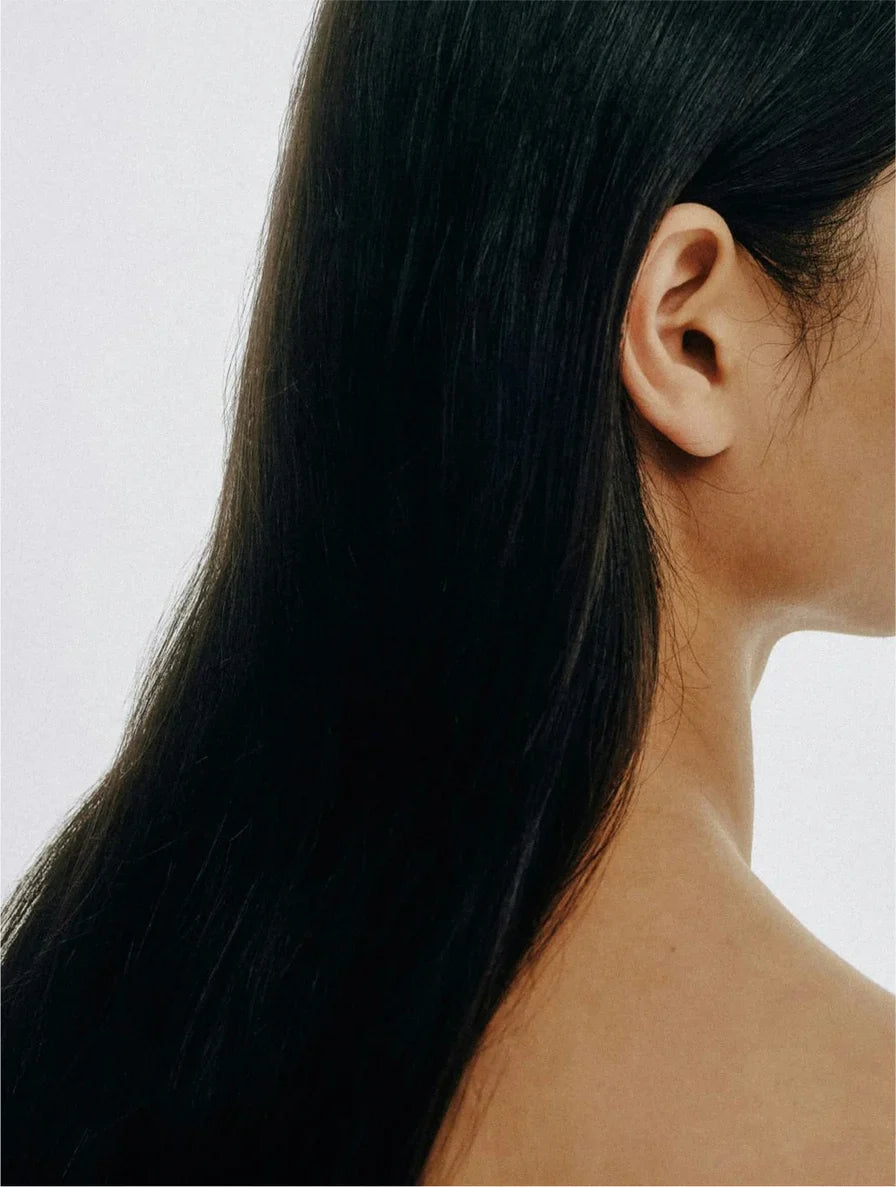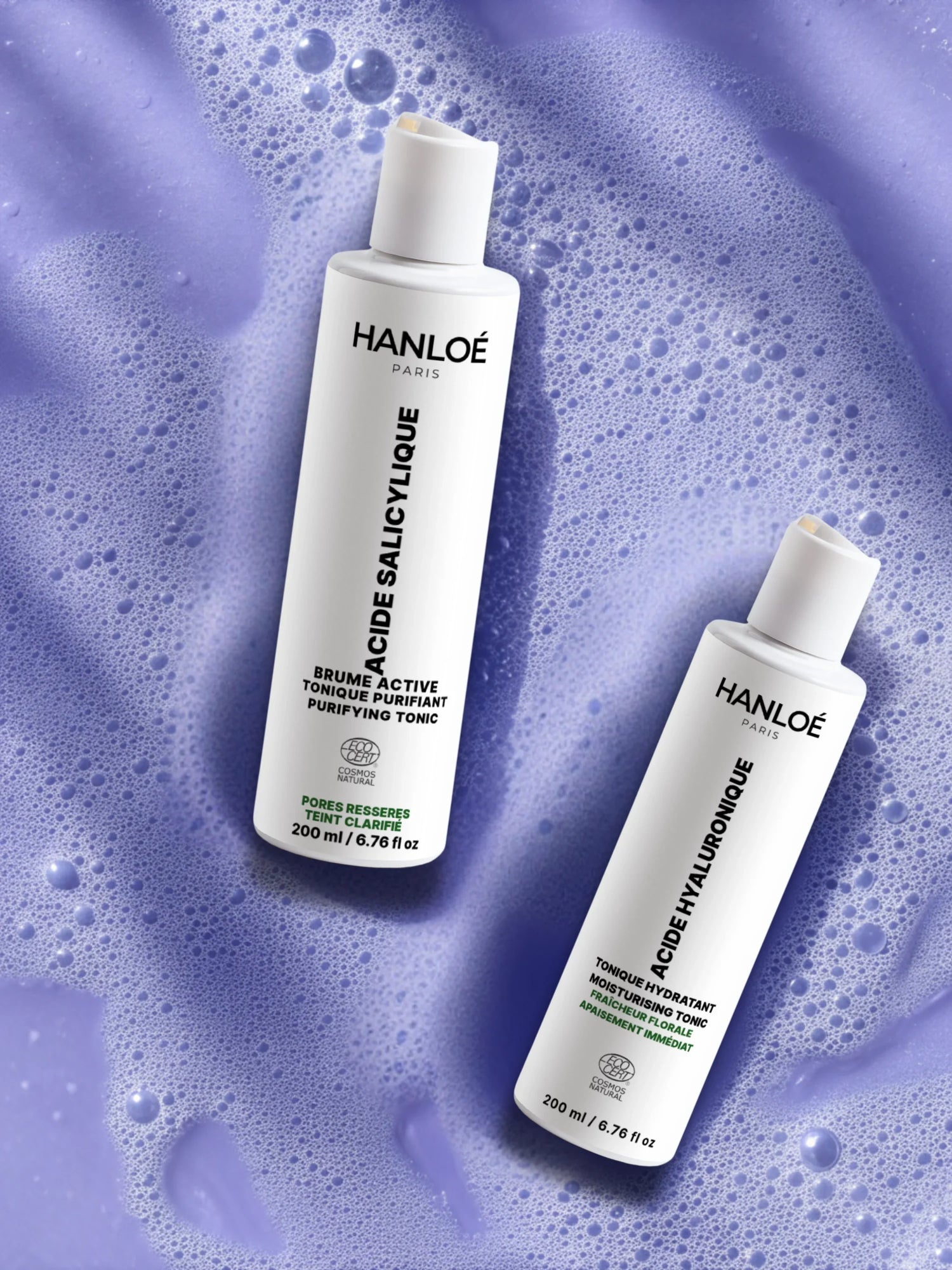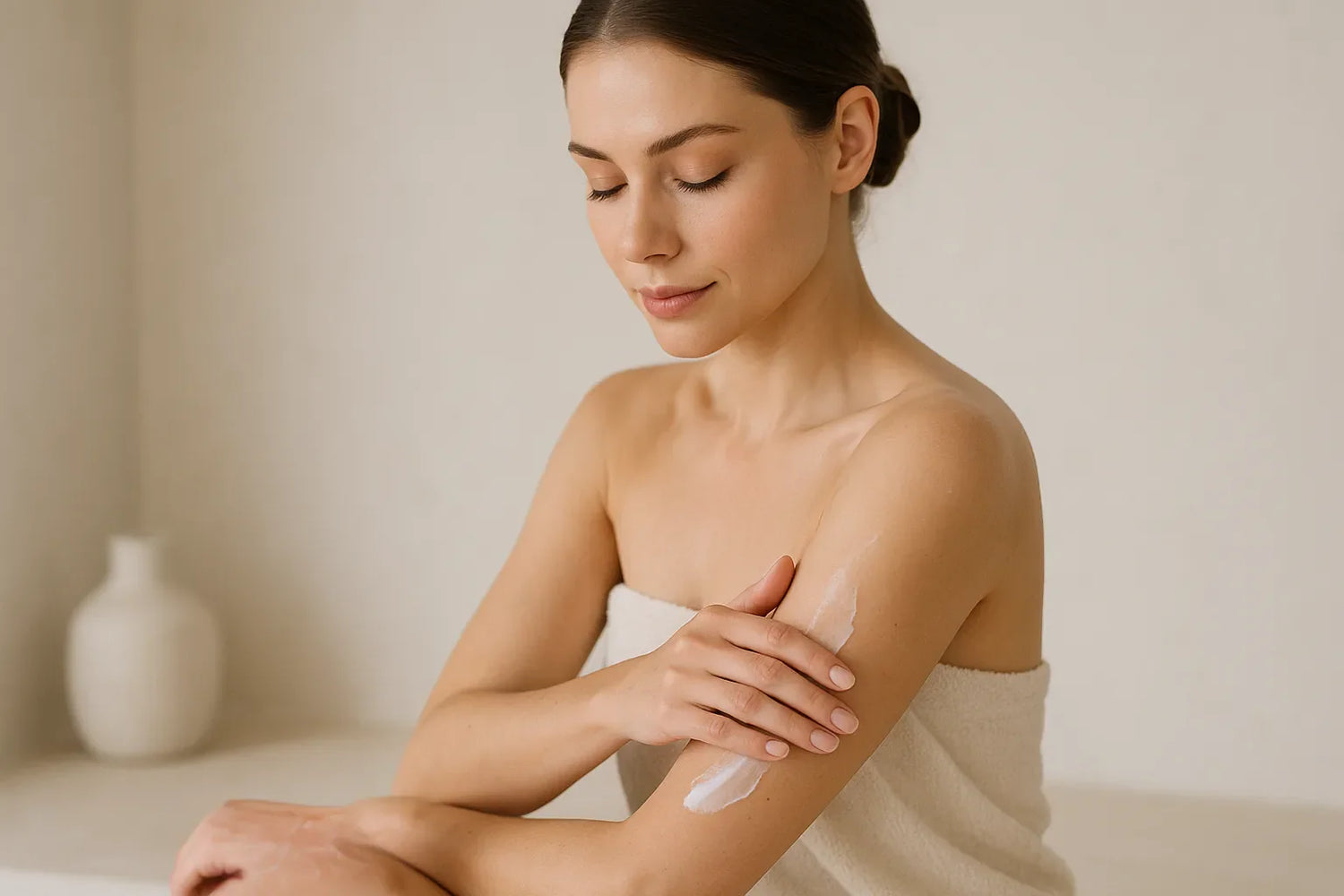Pigmentation spots: why use an anti-spot serum?
Dark spots on the face: causes, solutions and anti-dark spot routine
Understanding hyperpigmentation to take effective action: prevention, proven active ingredients, actions that make a difference.

Dark spots (hyperpigmentation) result from overproduction of melanin stimulated by the sun, inflammation, hormones, or aging. The good news: a consistent strategy— targeted active ingredients + sun protection —visibly improves skin tone evenness.
1. Where do brown spots come from?
- UV & visible light : trigger and maintain hyperpigmentation.
- Inflammation (acne, friction): generates post-inflammatory spots.
- Hormones (pregnancy, contraception): promote melasma.
- Age & oxidative stress : slow down cell renewal.
Understanding the origin guides the choice of active ingredients and the texture suited to your skin.

2. The different types of hyperpigmentation
Sunspots (lentigos)
UV-related. Responds well to antioxidants , kakadu/vitamin C , kojic acid , niacinamide + strict SPF.
Melasma
Hormonal imbalance + UV. Requires softness, cosmetic anti-inflammatories , kojic acid , arbutin , azelaic acid , and enhanced protection.
PIH (post-inflammatory)
Following pimples or irritations. Keys: skin barrier , niacinamide , gentle PHA/AHA , kojic , SPF .
Age spots
Oxidation + time. Winning combo: antioxidants + tyrosinase inhibitors + gentle renewal + SPF.
3. Assets that work
- Kojic acid : plant-based reference for inhibiting tyrosinase and visibly lightening.
- Stabilized vitamin C : illuminates, fights oxidation, evens out the complexion.
- Niacinamide : reduces melanin transfer, strengthens the barrier.
- Azelaic acid / PHA / AHA gentle : evens out without irritating when dosed correctly.
- Bakuchiol / peptides : support skin renewal and rebound.
- Mineral filters SPF 30–50 : prevent re-pigmentation.
The Hanloé point. Synergy trumps the miracle ingredient: a tyrosinase inhibitor + an antioxidant + daily SPF = lasting results.
4. 3-Step Anti-Dark Spot Routine
Morning — Protect & Illuminate
Gentle cleanser → Vitamin C/niacinamide serum → Light cream → Mineral SPF 50 (reapply during the day if exposed).
Evening — Correct & Repair
Gentle cleanser → Kojic acid serum +/- azelaic acid → Barrier cream (ceramides/omegas).
2×/week — Renew gently
Gentle exfoliation (low PHA/AHA %) + soothing mask. Avoid abrasive scrubs if PIH.
Option — Local Targeting
Special anti-blemish treatment on the affected areas for 8–12 weeks, then maintenance.
5. Common mistakes to avoid
- Skipping SPF : Cancels out the gains made overnight.
- Increase the number of strong acids : maintains inflammation → more PIH.
- Friction & picking : aggressive massages, hard scrubs, homemade extraction.
- Inconsistency : A spot-fighting routine is measured in weeks , not days.
6. Prevent relapses
- Daily SPF (all year round) + reapplication if exposed.
- Regular antioxidants (C, E, polyphenols) to neutralize residual UV rays.
- Skin barrier : hydration, pre/probiotics, ceramides.
- Skin rhythm : avoid overstimulation, favor consistency.
FAQ — Your Frequently Asked Questions
How long does it take to see improvement?
Typically 4-8 weeks for initial visible lightening, then consolidation for up to 12 weeks with daily SPF.
Can vitamin C and kojic acid be used together?
Yes, it's even a relevant combination (day: C; evening: kojic). On sensitive skin, introduce one after the other.
What if my skin reacts?
Reduce the frequency, favor soothing textures, strengthen the barrier, then gradually reintroduce.
Can melasma disappear completely?
It tends to relapse. The realistic goal: mitigation + control via a gentle routine and strict SPF.
Consistent anti-blemish routine, lasting results
Choose the winning combination: melanin inhibitors + antioxidants + mineral SPF .
Discover our sunscreens See the targeted serums
